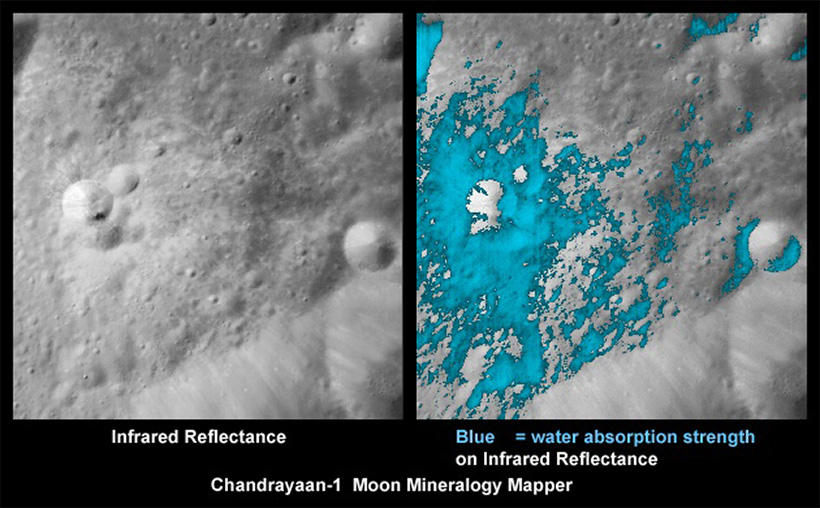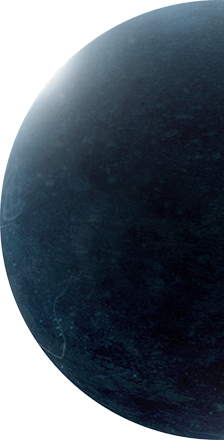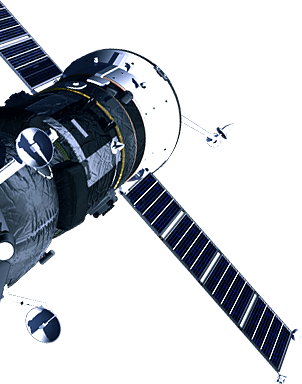
|

|
 Find out more about the project’s destination—the moon. An in-depth look at one of the most familiar celestial bodies is provided here. Find out more about the project’s destination—the moon. An in-depth look at one of the most familiar celestial bodies is provided here.
|
|
The Lunar DREAM CAPSULE Project is deeply connected to water on the Moon.
Let's trace back how water was discovered on the Moon and how it will affect mankind's future.

Six billion tons of water is more than enough to fill Lake Inawashiro in Fukushima Prefecture. Is there really that much water on the Moon? This question lingered because Luna Prospector only observed hydrogen, rather than
In a later year, Chandrayaan-1, India’s lunar probe, also captured data that indicated the presence of water molecules on the surface of the Moon. But their quantities were found to be very low.
Is there really water on the Moon? If yes, how much? In what form? Is it mixed with soil or reserved underground? To find answers to these questions, there is a need to investigate the geology of the Moon. NASA decided to take a bold approach that involves sending a rocket crashing into the Moon and analyzing materials thrown up by the impact.

The image on the right shows the widespread presence of water molecules (areas colored in light blue).
Source: ISRO/NASA/JPL-Caltech/USGS/Brown Univ.


In June 2009, NASA launched the Lunar Crater Observation and Sensing Satellite (LCROSS), a lunar probe designed to crash into the Moon to make geological investigations in search for water. The target impact site was Cabeus crater, which is located near the south pole of the Moon.
However, there was one question that racked the brains of the development team: how can ice and other materials thrown up be observed after the probe crashes into the Moon? One idea that they came up with was to make the probe crash in two phases.
The plan was: in the first phase, the Centaur rocket, which is attached to LCROSS, is separated and guided to smash into the Moon. Materials lifted by the impact are then observed from right above by LCROSS; and in the second phase, LCROSS itself crashes into the Moon, and this impact is observed by the Hubble Space Telescope in the space and large ground telescopes.
On October 9, 2009, the Centaur rocket hit the Cabeus crater at a high speed of about Mach 7.5.
Materials that had been beneath the crater for billions of years were lifted, and three types of cameras installed on LCROSS captured the moment of this impact while various instruments onboard the probe made observations and successfully transmitted the data to the Earth.
Although the observation of the impact of LCROSS, which crashed into the Moon six minutes later, was unsuccessful, the data transmitted from LCROSS provided very important findings.
As a result of in-depth analysis of materials sent up from beneath the surface of the Moon, NASA discovered evidence of that indicate the presence of water, such as data from the near-infrared spectrometers which matched the spectral data of a mixture of water vapor and ice and data from the ultraviolet-visual spectrometer which detected the spectral signature of a compound of water and dust.
The quantity of ice also far exceeded the projections of scientists. It was discovered that ice accounts for approximately 5.6% of materials contained in the surface soil of the Cabeus crater, a fact that amazed everyone.
NASA(National Aeronautics and Space Administration)

Many people may think that scientists became familiar with all the parts of the Moon under the Apollo program in the 1960s and 1970s. However, surprisingly, the detailed photos taken under the program covered only 20 degrees above and below the lunar equator, an area equivalent to only less than 20% of the total.
It was Japan's KAGUYA that made comprehensive investigations of the Moon after the Apollo program.
KAGUYA, launched in 2007, investigated the Moon scientifically for the first time in the world for about two years, using 14 different scientific observation instruments.
In terms of the discovery of water on the Moon, KAGUYA played its part by observing the details of the Shackleton crater lying at the south pole of the Moon, which is considered likely to have ice, as well as by developing an accurate global topographic map of the Moon with its resolution being as fine as 10 meters per pixel.
The topographic map was indispensable for NASA scientists to narrow down impact sites on the Moon for LCROSS in 2009, and they agreed that the map was very useful. Without data from KAGUYA, the feat of discovering water on the Moon might not have been achieved.


The presence of water on the Moon is thus essential for people to live, construct bases and observatories, and further expand activities on the Moon.
If the presence of water enables people to start living on the Moon, how will the future of the Moon change?
Tourists will also visit the Moon to see the "Earth-rise." Astronauts who take on a mission to asteroids or Mars may receive training on the Moon before departure. New occupations will be created one after another on the Moon, and there may be even people who decide to live on the Moon permanently.
In this way, if water on the Moon starts to be used for people's daily life and work, the possibility of humankind will expand endlessly. Keep watch on further investigations of water on the Moon!

Share this article





